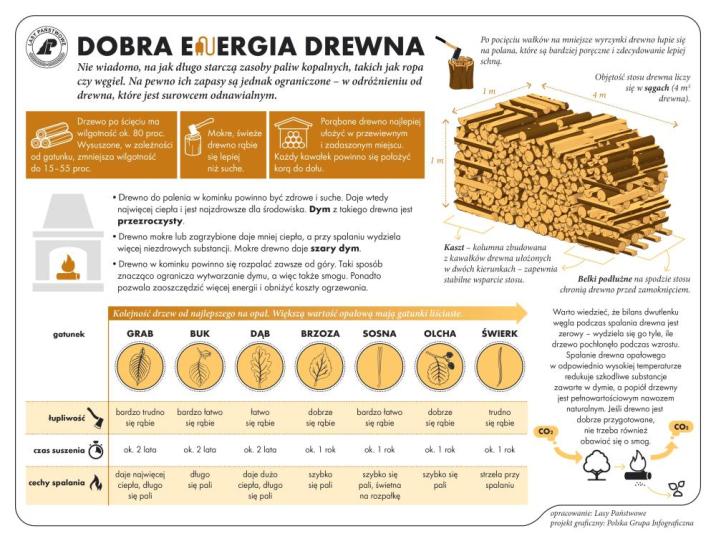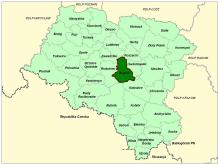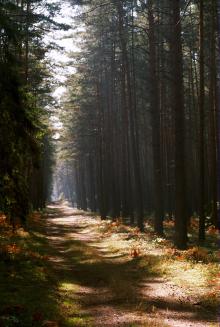Polish forests
Poland is in the European lead, while concerning the area of all forests. They cover about 29,2 % of the country territory, and grow within the area of 9,1 million hectares. The overwhelming majority of the forests is state owned, of which almost 7,6 million hectares are managed by the State Forests National Forest Holding..
The number of Polish forest is still growing. The forestation rate of the country has increased from 21 % in 1945 to 29,2 % at the moment. Between 1995 and 2008, the forest area increased by 310 thousand ha. The basis for afforestation works is the "National Programme for Increasing the Forest Cover" (KPZL), assuming an increase of the forestation rate up to 30 % by 2020 and up to 33 % by 2050. Polish forests abound in flora, fauna and fungi. 65 % of the total number of animal species live there.
The forests grow in our country on poor soils, mainly because of the development of the agriculture in previous years. It influences the distribution of the types of the forest sites in Poland. Over 55 % of the forest areas is covered with coniferous forests. In other areas, there are forest sites, mainly the mixed ones. Their small part constitute alder and riparian forests – not more than 3 %.
In the years 1945 – 2011 the area of natural deciduous tree stands within the area of the State Forests National Forest Holding increased from 13 to 28,2 %.
Within the lowlands and uplands the most often occurring tee species is pine. It covers 64,3 % of the forest area of the State Forests National Forest Holding and 57,7 % of private and commune forests. In the mountains the predominant species is European spruce ( in the west) and European spruce with beech (in the east). Domination of pine is the result of carrying on sustainable forest management in the past. Once, the monocultures (crops or cultivations of one species) were the answer to the great demand of industry for wood. Such forests appeared to be quite fragile to climatic factors. They also were often the prey of pests' expansion.
In Polish forests, the share of other tree species, especially deciduous trees have been systematically increasing. The foresters have stepped aside from monocultures – that is why, they try to fit specific species of the forest stand to the natural stand, that would be proper for the given area. Thanks to that, in the years 1945 – 2011, the area of the deciduous tree stands within the lands of the State Forests National Forest Holding increased from 13 to 28,2 %. There occur more and more frequently the following tree species: oaks, ashes, maples, sycamore maples, elms, but also birches, beeches, alders, poplars, hornbeams, aspens, tilias and willows.
Our forests are the most often represented by the forest stands aged 40 to 80 years. The average age of the forest equals 60 years. More and more trees are of big size at the age over 80 years. Since the end of the Second World War, the forests' area has increased up to almost 1,85 million hectares.
Raport o stanie lasów w Polsce 2012
 Asset Publisher
Asset Publisher
Dobra Energia Drewna
Dobra Energia Drewna
Sezon grzewczy w naszych domach w pełni. Sposobów na ogrzewanie jest wiele. Jednak który z nich jest najlepszy?
Do XIX w. drewno było najpopularniejszym paliwem na świecie. Po rewolucji przemysłowej w Europie wyparł je węgiel i pochodne ropy naftowej, np. olej. Dziś drewno jest używane jako opał w krajach rozwijających się. W Polsce nadal pali się nim w piecach na wsi. Ostatnio staje się coraz powszechniejsze także w miastach, gdzie domy wyposaża się w kominki.
Jako opał najlepiej wykorzystywać drewno gatunków o największej gęstości (stosunek masy drewna do jego objętości), takich jak grab, buk czy dąb. Pocięte i porąbane na szczapy drewno powinno się suszyć w zadaszonym i przewiewnym miejscu minimum dwa lata. Tylko wtedy będzie zawierało minimalną ilość wody, co zapewnia najlepsze właściwości opałowe.
Gdzie kupić drewno opałowe?
Drewno najlepiej zakupić w nadleśnictwie. Każde z 38 nadleśnictw podlegających pod Regionalną Dyrekcję Lasów Państwowych w Katowicach posiada informacje na swojej stronie internetowej na temat aktualnej oferty, zawierającej cennik sortymentu (S4 – opałowe). Tak kupione drewno wymaga od nas późniejszego przygotowania, pocięcia i sezonowania. Gotowy opał możemy kupić również na składnicach drewna, jak również od prywatnych dostawców, np. w marketach.
Nie wiadomo na jak długo starczą zasoby paliw kopalnych, takich jak ropa czy węgiel. Bez wątpienia są to jednak zapasy skończone – w odróżnieniu od drewna, które jest surowcem odnawialnym.
- Do XIX wieku drewno było najpopularniejszym paliwem na świecie. Potem wyparł je węgiel i ropa naftowa. Drewno jest surowcem odnawialnym, co oznacza, że jego zasoby przy racjonalnej gospodarce leśnej się nie skończą.
- Zrównoważona gospodarka leśna jest kluczem do zwiększenia roli lasu, jako źródła energii odnawialnej. Nadal, prawie połowa światowej produkcji drewna, jest zużywana do gotowania, ogrzewania czy wytwarzania energii elektrycznej. Lasy dysponują zapasem energii dziesięciokrotnie przewyższającym roczne zużycie energii na całym świecie.
- Drewno opałowe jest nie tylko najbardziej ekologicznym źródłem ciepła, ale też jest atrakcyjniejsze, pod względem relacji ceny do wydajności energetycznej niż węgiel, olej, gaz czy energia elektryczna. Bilans dwutlenku węgla podczas spalania drewna jest zerowy – wydziela się tyle pierwiastka, ile drzewo pochłonęło podczas wzrostu. W tym procesie nie powstaje również szkodliwy smog.
- kupione drewno wymaga od nas późniejszego przygotowania, pocięcia i sezonowania. Rąbanie drewna to nie tylko korzyść z przebywania na świeżym powietrzu ale i doskonały sposób na spalenie nieco kalorii. Rąbiąc drewno możemy spalić nawet 444 kcal w trakcie godziny.
- Jako opał najlepiej wykorzystywać drewno o największej gęstości, np. grab, buk czy dąb. Spalanie drewna w odpowiednio wysokiej temperaturze redukuje szkodliwe substancje zawarte w spalinach, a popiół drzewny jest pełnowartościowym nawozem naturalnym.
- Jako drewno kominkowe wybierana jest również brzoza lub świerk, ponieważ podczas spalania przyjemnie „trzaska" dodając uroku palącemu się kominkowi. Dzieje się to pod wpływem działania wysokiej temperatury. Zawarta w drewnie woda, żywica i wszelkie olejki eteryczne przechodzą w stan gazowy, powodując pękanie struktury drewna i ten charakterystyczny dźwięk trzaskania.


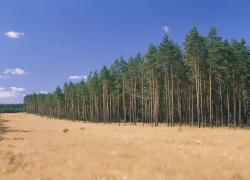 fot. Paweł Fabijański
fot. Paweł Fabijański
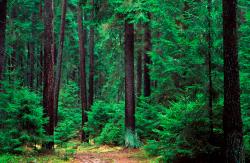 fot. Paweł Fabijański
fot. Paweł Fabijański
 fot. Paweł Fabijański
fot. Paweł Fabijański

